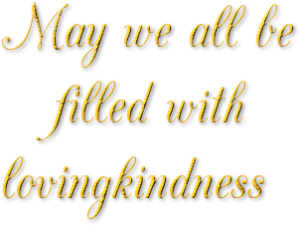
The Liebster Award was created to recognize new blogs in a “pay it forward” manner. The word ‘liebster’ is German for ‘favorite’ or ‘dearest.’
I am grateful to Dorlee M from the Social Work Career Development blog for nominating my blog, My Balancing Act, for this award (http://www.dorleem.com/2014/01/social-work-career-development-receives.html).
The origins of the award are unclear and the rules have varied over time. In this incarnation of the award, the rules, as I understand them, are as follows:
- Thank the person who nominated you for the Liebster Award.
- Answer the 10 questions posed by the person who nominated you.
- Pay it forward by nominating 10 blogs with less than 3000 subscribers or Facebook fans.
- Create 10 questions for your nominees to answer if they choose to accept the award.
10 Questions Dorlee posed for nominees to answer:
- What are the best three words that would describe you?
genuine, caring, and determined
- What do you hope to achieve with your blog?
I am working on achieving a more balanced life and decided to share my process to help keep me honest, and to help others who are striving for greater balance, by offering tools and strategies gleaned from my personal and professional knowledge and experience.
- Which of your blog posts is your favorite, and why?
The post on body scan meditations is one of my favorites, because I did something different by recording a guided meditation and including an excerpt in the post.
The Greatest Love of All is also a favorite, because I used lyrics from a song that is meaningful to me to illustrate my point and shared about my passion for singing and how I turn it into a form of meditation.
- What has writing taught you?
Writing this blog is challenging me to be more courageous and transparent about my own struggles, to help me to grow and to help others to know they are not alone when life’s journey is difficult. It is also challenging me to let go of my perfectionism. If I am tweaking the wording or the layout or looking for the source of a fact I want to include and it is taking too much time, then I am learning to let it go.
- What advice do you have for pushing through fear?
I actually wrote about this in my post, Balancing Mindfulness of Emotions with Lovingkindness. I wrote, “It is the fear of fear that causes us to avoid it and try to block it from our minds. When we face our fears, they become more manageable.”
To illustrate this point, I like to tell clients the story of Vishne and the Hindu gods, which I first heard at a training presented by Linda Sanford.
Vishne and his fellow Hindu gods lived in a castle in the sky. One day Vishne had to go away on business. After he left there was a knock on the door. When the Hindu gods opened the door, they discovered a monster standing there. They became frightened and the monster gobbled up their fear and got bigger. This made them more frightened and the monster gobbled up that fear as well and grew even bigger. This continued for some time with the monster getting bigger and bigger as the gods became more and more scared, until the monster had taken over almost the entire castle. Then Vishne came home and took one look at the situation and knew exactly what to do. He walked up to the monster, shook his hand and said, “Hi, I’m Vishne. Who are you?” And the monster became smaller and smaller and smaller until he was much smaller than Vishne and not scary at all.
- What are some of your favorite quotes?
“If I am not for myself, then who will be for me? And if I am only for myself, then what am I? And if not now, when?” –Hillel
“Do not go where the path may lead, go instead where there is no path and leave a trail.” –Ralph Waldo Emerson
“You must be the change that you wish to see in the world.” —Mahatma Gandhi
“Life isn’t about waiting for the storm to pass…It’s about learning to dance in the rain.” ― Vivian Greene
- What do you do for self-care and/or relaxation?
Meditation, exercise, reading, doing puzzles, listening to music and singing, I also love to swim and do tai chi.
- How did you find your current position?
I’m in private practice so I created my current position.
- What advice do you wish someone had given you before starting your career?
I wish someone had explained how important it is not to overextend yourself, to guard against unintentionally encouraging dependency in your clients, and not to be so sure that you are right that you fail to listen to another point of view.
- What are three things on your bucket list?
Becoming a serious student of Qi Gong and Tai Chi, becoming fluent in Spanish and Hebrew, and writing a novel about the parallel lives of a psychotherapist and one of her clients.
Paying it forward- My 10 nominations for the Liebster Award:
Allison Andrews, PsyD – Practical Strategies and Emotional Support for the Parents of Quirky Kids http://www.allisonandrewspsyd.com/blog/
Judith Barnard, MSW, RSW – From Distress to Peace: A Mindful Life http://judithbarnard.wordpress.com/
Dr. Ann Becker-Schutte, PhD – Help at the Intersection of Physical & Mental Health http://www.drannbeckerschutte.com/
Mirel Goldstein, LPC – Goldstein Therapy – Clifton, NJ Counseling Blog http://goldsteintherapy.com/blog.html/
Ricky Greenwald, PsyD – Once Upon A Time… Trauma Institute/Child Trauma Institute Blog http://www.childtrauma.com/blog
Cathy Hanville, LCSW – Thoughts of a Psychotherapist http://www.cathyhanville.com/cathy-hanville-lcsw-blog/
JoAnn Jordan, board certified music therapist – Music Sparks – Music to spark a better life http://www.music2spark.com
Barbara Lavi, PsyD – The Wake Up and Dream Catalyst http://wakeupanddreamcatalyst.blogspot.com/
Kathy Morelli, LPC – BirthTouch – Marriage, Motherhood, and Mental Health http://birthtouch.com/
Carolyn Stone, Ed.D. – Blog about helping special needs children and adolescents and their families http://www.drcarolynstone.com/blog/
There are many other blogs that I enjoy reading. I chose these because they are relatively unknown and deserving of greater attention, and new posts are added regularly, at least once a month. Also, to my knowledge, they have not been nominated before. Otherwise, Dorlee’s blog would definitely be on my list! Even though it was difficult to choose which blogs to nominate, it is my pleasure to pay it forward.
10 questions for my nominees to answer:
- What is your vision for your blog? What are you hoping to communicate via blogging?
- Which of your blog posts is your favorite? Why?
- What are the 5 things you like most about yourself?
- What is your proudest achievement?
- What is your greatest challenge?
- What are you most grateful for?
- What do you do for self-care?
- Who do you admire and why?
- What are your favorite quotes?
- What do you hope to be doing in 5 or 10 years?
Nominees, I hope you will all accept this award and then pay it forward, as I have done with you.
Accepting this award led me to do some reflection on my career and my life to enable me to answer some of Dorlee’s questions. It was a worthwhile challenge that enabled me to get some new insight and perspective. So thanks again, Dorlee, for honoring me and my blog with this award.
 Today is the first day of the 28-Day Meditation Challenge based on practices found in Sharon Salzberg’s books: Real Happiness, and Real Happiness at Work. I participated in this challenge last year and have made a commitment to participate again this year. I hope you will join me by making your own commitment to 28 days of meditation practice.
Today is the first day of the 28-Day Meditation Challenge based on practices found in Sharon Salzberg’s books: Real Happiness, and Real Happiness at Work. I participated in this challenge last year and have made a commitment to participate again this year. I hope you will join me by making your own commitment to 28 days of meditation practice.
 Recently, while reading the book True Refuge, by Tara Brach, PhD, I was struck by her concept of the sacred pause. I appreciated her description of the steps involved in pausing and arriving in presence and started playing around with the concepts in my mind. I began to conceptualize it a little differently because my original introduction to mindfulness, close to 20 years ago, was through the lens of Dialectical Behavior Therapy(DBT), which I started learning when I participated in my first week-long training with Marsha Linehan on how to teach clients mindfulness, distress tolerance, emotional regulation, and interpersonal effectiveness skills. Beginning to integrate these two approaches to mindfulness, as well as concepts learned from workshops and courses with Sharon Salzberg, Tara Brach, Ron Siegel and others, produced these seven steps to mindful awareness.
Recently, while reading the book True Refuge, by Tara Brach, PhD, I was struck by her concept of the sacred pause. I appreciated her description of the steps involved in pausing and arriving in presence and started playing around with the concepts in my mind. I began to conceptualize it a little differently because my original introduction to mindfulness, close to 20 years ago, was through the lens of Dialectical Behavior Therapy(DBT), which I started learning when I participated in my first week-long training with Marsha Linehan on how to teach clients mindfulness, distress tolerance, emotional regulation, and interpersonal effectiveness skills. Beginning to integrate these two approaches to mindfulness, as well as concepts learned from workshops and courses with Sharon Salzberg, Tara Brach, Ron Siegel and others, produced these seven steps to mindful awareness.
 The prefrontal cortex is the part of the brain that persuades you to get up to meditate and exercise when you feel like staying in bed, helps you to resist the extra helping of dessert, and motivates you to start working on the project that you feel like putting off until tomorrow. According to Robert Sapolsky, a neurobiologist at Stanford University, the main purpose of the prefrontal cortex is to bias the brain towards choosing to do “the harder thing.”
The prefrontal cortex is the part of the brain that persuades you to get up to meditate and exercise when you feel like staying in bed, helps you to resist the extra helping of dessert, and motivates you to start working on the project that you feel like putting off until tomorrow. According to Robert Sapolsky, a neurobiologist at Stanford University, the main purpose of the prefrontal cortex is to bias the brain towards choosing to do “the harder thing.”